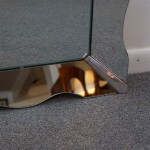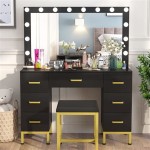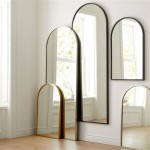Baby Proofing Hanging Mirrors: A Guide to Child Safety
Mirrors add light and depth to any space, but they can pose a significant safety risk to young children. Babies and toddlers are naturally curious and may pull, grab, or even climb on a seemingly stable mirror, leading to potential accidents. Therefore, baby-proofing hanging mirrors is crucial for creating a safe home environment.
Understanding the specific risks associated with mirrors is the first step in effective baby proofing. The primary dangers include the mirror falling and shattering, causing injuries from broken glass. Additionally, heavier mirrors can cause significant impact injuries if they fall on a child. Even smaller, lighter mirrors can present a choking hazard if broken into small pieces.
Before implementing any baby-proofing measures, assess the mirror's existing installation. Check for any loose screws, weak anchors, or instability in the hanging mechanism. An improperly secured mirror is more likely to fall, regardless of the child's actions. Identifying pre-existing vulnerabilities helps prioritize the most effective safety solutions.
One of the most effective methods for baby-proofing hanging mirrors is using specialized mirror safety straps. These straps are designed to secure the mirror to the wall, providing an additional layer of support in case the primary hanging mechanism fails. Mirror straps are typically made of strong, durable materials, such as nylon or polyester, and are adjustable to fit various mirror sizes and shapes.
When installing mirror straps, ensure they are attached to secure wall studs for maximum holding power. Using wall anchors specifically rated for heavy objects is highly recommended, especially for larger or heavier mirrors. Follow the manufacturer's instructions carefully for proper installation and tensioning of the straps. Regularly inspect the straps for signs of wear or damage, replacing them as needed.
Another valuable strategy for baby proofing is applying a shatter-resistant film to the mirror's surface. This film adheres to the glass and holds the pieces together in case of breakage, minimizing the risk of sharp shards scattering and causing injury. While the film won't prevent the mirror from falling, it significantly reduces the risk of lacerations from shattered glass.
Various types of shatter-resistant film are available, ranging from thin, clear films to thicker, more protective options. Choose a film that is specifically designed for mirrors and follow the manufacturer's instructions for application. Ensure the film covers the entire surface of the mirror for optimal protection.
Positioning the mirror strategically can also enhance safety. Avoid hanging mirrors directly above cribs, changing tables, or other areas where children frequently spend time. Consider placing mirrors higher on the wall, out of reach of curious hands. For lower-hanging mirrors, ensure they are positioned in areas with minimal traffic and activity.
Alongside these practical measures, educating children about mirror safety is essential. While young children may not fully grasp the concept of danger, they can be taught not to touch or pull on mirrors. Reinforce this message consistently and supervise children closely around mirrors, especially during their early years.
Regularly inspect all hanging mirrors in the home to ensure their secure installation and identify any potential hazards. Check for loose screws, weakened adhesive, or any signs of instability. Address these issues promptly to maintain a safe environment. The frequency of inspections should depend on factors such as the age and activity level of children in the home.
Securing furniture near mirrors is another important safety precaution. Children may attempt to climb on furniture to reach a mirror, increasing the risk of both the mirror and the furniture tipping over. Anchor heavy furniture pieces to the wall using appropriate hardware and ensure they are stable and unlikely to topple.
Choosing the right type of mirror for a child's room or play area can also contribute to safety. Consider using lightweight, unbreakable mirrors made of acrylic or other non-glass materials. These mirrors are less likely to cause injury if they fall or are mishandled. While they offer less clarity than traditional glass mirrors, they provide a safer alternative for younger children.
Creating a safe environment for children requires vigilance and proactive measures. Baby-proofing hanging mirrors is a crucial step in preventing accidents and injuries. By implementing these safety strategies and remaining attentive to potential hazards, caregivers can create a more secure and enjoyable home for their children.

Elegant And Secure Ways To Hang Leaning Mirrors

Willow 3 Pc Mirror Macrame Wall Hangings Crane Baby

Willow 3 Pc Mirror Macrame Wall Hangings Crane Baby

Little Love By Nojo Elephant Shaped Easy Hang Shatter Proof Child S Mirror 5220996p The Home Depot

Willow 3 Pc Mirror Macrame Wall Hangings Crane Baby
Pediatricians Share How To Childproof A Living Room And Risks Avoid

Elevens 59 X 36 Black Full Length Floor Mirror Large Rectangle Wall Standing Hanging Or Leaning Against For Bedroom Dressing And Mounted Thin Frame Com

Bear Baby View Mirror For Rear Facing Hanging Safety Auto Infants Com

Little Love By Nojo Elephant Shaped Easy Hang Shatter Proof Child S Mirror 5220996p The Home Depot

Hanging A Mirror In The Nursery








